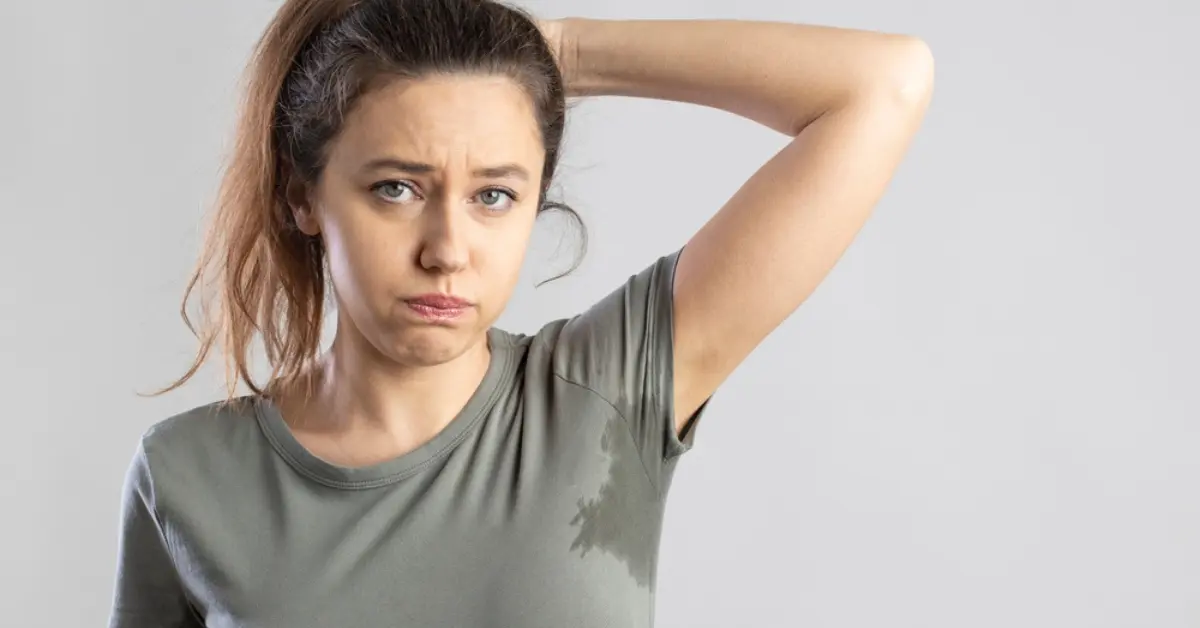Are your underarms drenched after only an hour? Everyone sweats, however if you’re continuously saturated, you may have excessive sweating, a medical disorder which may be treated. As explained by Hunter Q. Kirkland, MD, a Cardiothoracic & Cardiovascular Doctor in Austin, Texas; “Sweating is a common response to heat or stress.”
Sweating is often utilized for cooling the body and control its temperature. But too much sweat may cause filthy clothes and bodily scents, affecting social relationships and even self-esteem. Excessive sweating, also called as hyperhidrosis, is far more than simply a discomfort.
It’s a sweet symphony that performs on the great stage of your everyday existence.
From moist handshakes to sweat-soaked clothing, it may be humiliating and downright unpleasant.Most individuals have sweaty armpit stains at some time in their lives.
If it occurs to you regularly or begins to restrict other activities in your daily routine, it may be time to consult with your doctor. But don’t worry; in this article, we’ll reveal the seven most important facts concerning Excessive Sweating.
1. Hyperhidrosis Basics
Let’s begin with the essentials. Hyperhidrosis is more than merely excessive sweating; it is a failure of the body’s normal cooling process. While sweating is normal and vital, patients with hyperhidrosis endure an excessive and sudden spike in perspiration, usually without any clear explanation.
The Impact:
Aside from feeling physical discomfort, excessive sweating may have an affect on one’s mental state. Constant worry over sweating hands or underarms may cause anxiety, disrupting everyday interactions. Recognizing that too much sweating is a medical problem is the first step in overcoming its challenges.
2. Differentiating Primary vs Secondary Hyperhidrosis
The vast majority of cases with excessive sweating are classed as primary, which implies there is no obvious cause. It’s if your body’s sweat response chooses to work on its own terms, with no apparent external input.
On the other hand, secondary hyperhidrosis may be linked back to an existing medical problem, including diabetes or thyroid difficulties. Identifying and addressing the main problem may frequently ease the excessive perspiration.
3. Common Sweating Hotspots
While sweating affects the whole body, specific places are more susceptible to excessive dripping. Think about your hands, soles, underarms, and face. Those are the unofficial places where hyperhidrosis prefers to let out its torrent.
Coping Mechanisms:
Recognizing these common zones enables the development of strategic coping methods. From permeable textiles to antiperspirants tailored for particular regions, there are methods to regulate the flow and feel confident.
4. When to Seek Professional Help
It is critical to distinguish both normal sweating and hyperhidrosis. If your sweating hampers everyday activities, it’s essential to seek expert guidance. Dermatologists and healthcare specialists may evaluate the severity and propose appropriate remedies.
Treatment Options:
There are several remedies available, ranging from prescription antiperspirants to Botox injections and even surgery. An expert review helps establish the most effective course ahead.
5. Coping Adjustments in Lifestyle
Embracing breathable textiles and loose clothes may be a game-changer. Think of your clothes as your shield against the sweat onslaught – light, breezy, and carefully designed. Stress increases hyperhidrosis.
Engaging in stress-reducing exercises, whether it is meditation, yoga, or a brisk stroll, may help greatly to regulate excessive perspiration. It’s like gently resetting your body’s internal temperature.
6. The Psychological Toll of Excessive Sweating
Beyond the physical indications, the social effect of hyperhidrosis may be severe. Individuals may retreat from social events to avoid shame, resulting in sentiments of isolation. It is critical to recognize the psychological toll.
Seeking assistance from close companions or support groups may make a significant impact. It’s not only about controlling the symptoms of illness but treating the emotional components as well.
7. The Importance of Personalized Approaches
What is effective for one individual may not be effective for other. Personalised treatments are crucial in treating excessive perspiration. Trial and error, supervised by healthcare specialists, aids in determining the most successful solutions.
It’s inspiring to realise that everyone’s sweating experience is unique. It’s not about removing perspiration totally but creating a balance routine that helps you to manage life comfortably.
Conclusion
To summarise, excessive perspiration is a multidimensional problem that extends beyond the physical. By grasping its complexities, discriminating between fundamental and additional causes, and implementing customised coping tactics, strengthen yourself to combat the drip.
Remember that excessive sweating is not something you can combat alone. Seeking expert help, making lifestyle changes, and accepting the psychological cost are all steps toward regaining control. It’s time to redefine the narrative surrounding excessive perspiration — from humiliation to empowerment.

Thank you for your post. I really enjoyed reading it, especially because it addressed my issue. It helped me a lot and I hope it will also help others.